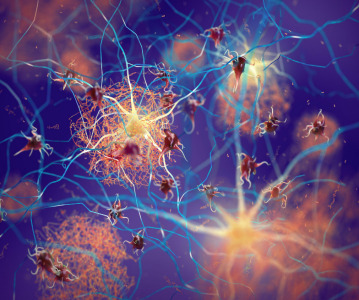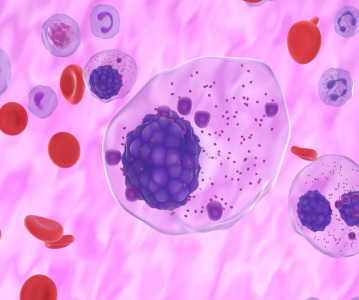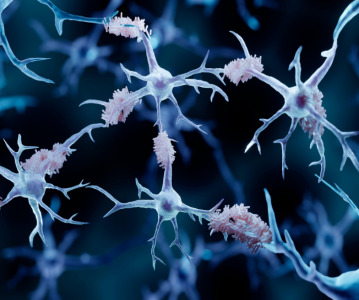3-D Changes in DNA may Lead to a Genetic Form of Lou Gehrig’s Disease

New findings reveal how a mutation, a change in the genetic code that causes neurodegeneration, alters the shape of DNA, making cells more vulnerable to stress and more likely to die.
The particular mutation, in the C9orf72 gene, is the most common cause for amyotrophic lateral sclerosis (ALS, also known as Lou Gehrig’s disease), and frontotemporal degeneration (FTD), the second most common type of dementia in people under 65.
This research by Jiou Wang, PhD, and his colleagues at Johns Hopkins University (JHU) was published in Nature and was partially funded by the National Institutes of Health’s National Institute of Neurological Disorders and Stroke (NINDS).
Using sophisticated molecular techniques, Dr Wang and his team showed that the mutation causes changes in the three-dimensional shape of DNA. DNA is normally shaped like a twisted ladder. However, the repeating sequences can fold into G-quadruplexes, stacks of square-shaped molecules known as G-quartets. "This structure has been described as a square building with each floor representing one G-quartet, normally two to four stories high,” said Dr Wang, senior author of the paper.
Their results also showed that C9orf72 mutated DNA has profound effects on how the genetic message is processed in the cell. RNA, short for ribonucleic acid, acts as an important intermediary — a middleman — in the process that converts genetic information from DNA into functional proteins. This happens in two stages: conversion of the DNA code into RNA is called transcription. RNA then forms proteins during a process known as translation.
To read NIH's full story, click here
Related News
-
News BioNTech to begin mRNA vaccine manufacturing in Rwanda by 2025
German biotechnology company BioNTech has stated their intentions to begin production at their mRNA vaccine factory in Rwanda by 2025, which will mark the first foreign mRNA vaccine manufacturing site on the continent of Africa. -
News Identifying Alzheimer’s Disease biomarker proteins with whole blood tests
A University of Manchester spin-out pharmaceutical company, PharmaKure, has reported successful study results for the quantification of Alzheimer’s Disease biomarker proteins with a whole blood test. -
News Bill & Melinda Gates Foundation to boost mRNA vaccine initiatives in Africa with USD $40m
To address vaccine inequality and accessibility issues, the Bill & Melinda Gates Foundation aims to deliver USD $40m to various biotech companies and vaccine manufacturers in support of mRNA vaccine development. -
News CPHI Podcast Series: Exploring neurological frontiers in Alzheimer's and beyond
The next episode of the CPHI Podcast Series delves into the science and background behind some recent developments in the field of Alzheimer's disease and neurological disorders. -
News Is patient centricity the future of pharmaceutical manufacturing?
In this interview with Sandra Sánchez y Oldenhage, President of PharmAdvice, she speaks to the importance of considering patients in the manufacturing stages of the pharmaceutical supply chain, and how it can redefine healthcare. -
News CPHI Podcast Series: How to leverage AI for Drug Discovery
Artificial intelligence is the topic of debate in the latest episode from the CPHI Podcast Series, where Digital Editor Lucy Chard speaks with Bill Whitford of DPS Group about the integration of AI in healthcare. -
News Pfizer forges ahead with blood cancer therapy after approval from FDA
Pfizer gains accelerated approval from the US FDA for their new bispecific antibody therapy for multiple myeloma, set to address an unmet need for patients. -
News Alzheimer's drug donanemab deemed effective in landmark clinical trial
Results from the TRAILBLAZER-ALZ 2 Randomised Clinical Trial into the use of donanemab to treat early symptoms of Alzheimer’s disease have been analysed.
Position your company at the heart of the global Pharma industry with a CPHI Online membership
-
Your products and solutions visible to thousands of visitors within the largest Pharma marketplace
-
Generate high-quality, engaged leads for your business, all year round
-
Promote your business as the industry’s thought-leader by hosting your reports, brochures and videos within your profile
-
Your company’s profile boosted at all participating CPHI events
-
An easy-to-use platform with a detailed dashboard showing your leads and performance







